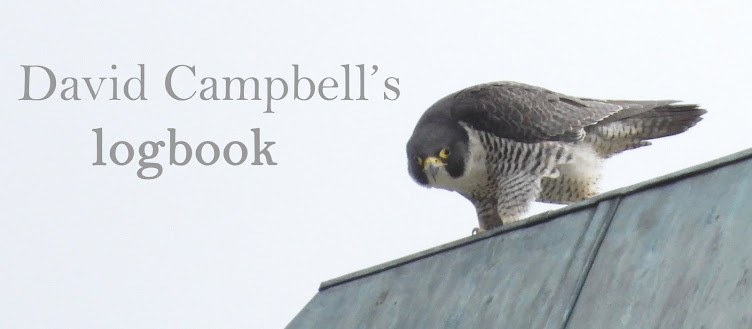Today I took advantage of an opportunity to go birding on the south coast and hopped into
Billy Dykes' car at 8.30am bound for Langstone Harbour and Hayling Island.
We arrived at Langstone Harbour at 10.00am and I was greeted by a group of about 20 people who were there for the RSPB walk. I don't normally do these group walks and they're not my sort of thing really but it is nice to do them once or twice a year.
Red-breasted Mergansers and
Goldeneyes were immediately viewable as was an assortment of common waders. A
Greenshank showed very well providing me with a year tick and there were good numbers of
Bar-tailed Godwits which were also a year tick.
One of the several
Curlews in the area showed excellently in a meadow next to the footpath.

Curlew
A
Common Buzzard circled in the distance and I located two adult
Mediterranean Gulls amongst a group of
Black-headed Gulls.

Mediterranean Gull
I jumped into a birder's car and the group went over to Hayling Island. 15
Black-necked Grebes were off the oysterbeds. The best bird was soon seen and everyone got distant views of a female
Velvet Scoter, a useful year tick. It took off, revealing its white wing panels, and landed with a group of
Goldeneye. 3
Common Buzzards and a couple of
Kestrels were in the area.

Black-necked Grebes

Velvet Scoter with Great Crested Grebe
3
Rock Pipits showed excellently a bit further along the oysterbeds. Good numbers of waders were around with a few
Dark-bellied Brent Geese. I managed to pick out a couple of
Pale-bellied Brent Geese, a race-lifer for me. We got slightly better views of the
Black-necked Grebes as we moved further up and saw the
Velvet Scoter again.

Pale-bellied Brent Geese
4 male and 3 female
Red-breasted Mergansers performed stunningly on the oysterbeds, coming at exceptionally close range for the species, at times, and displaying and chasing each other in wonderful light. These are one of my favourite ducks, beautiful and full of character.

drake Red-breasted Merganser
The walk finished and Billy and I got in Sean Foote's car to have a look for the Green-winged Teal for Billy. We soon got to Budds Farm Sewage Works and scanned through the
Eurasian Teal for half an hour or so but couldn't get onto the yank. 3 adult
Mediterranean Gulls were with the flock of
Black-headed Gulls and gave their yelping call as they flew off. My dad soon arrived and drove us back home . . . not a bad day.






 Greylags
Greylags male Stonechat
male Stonechat
















